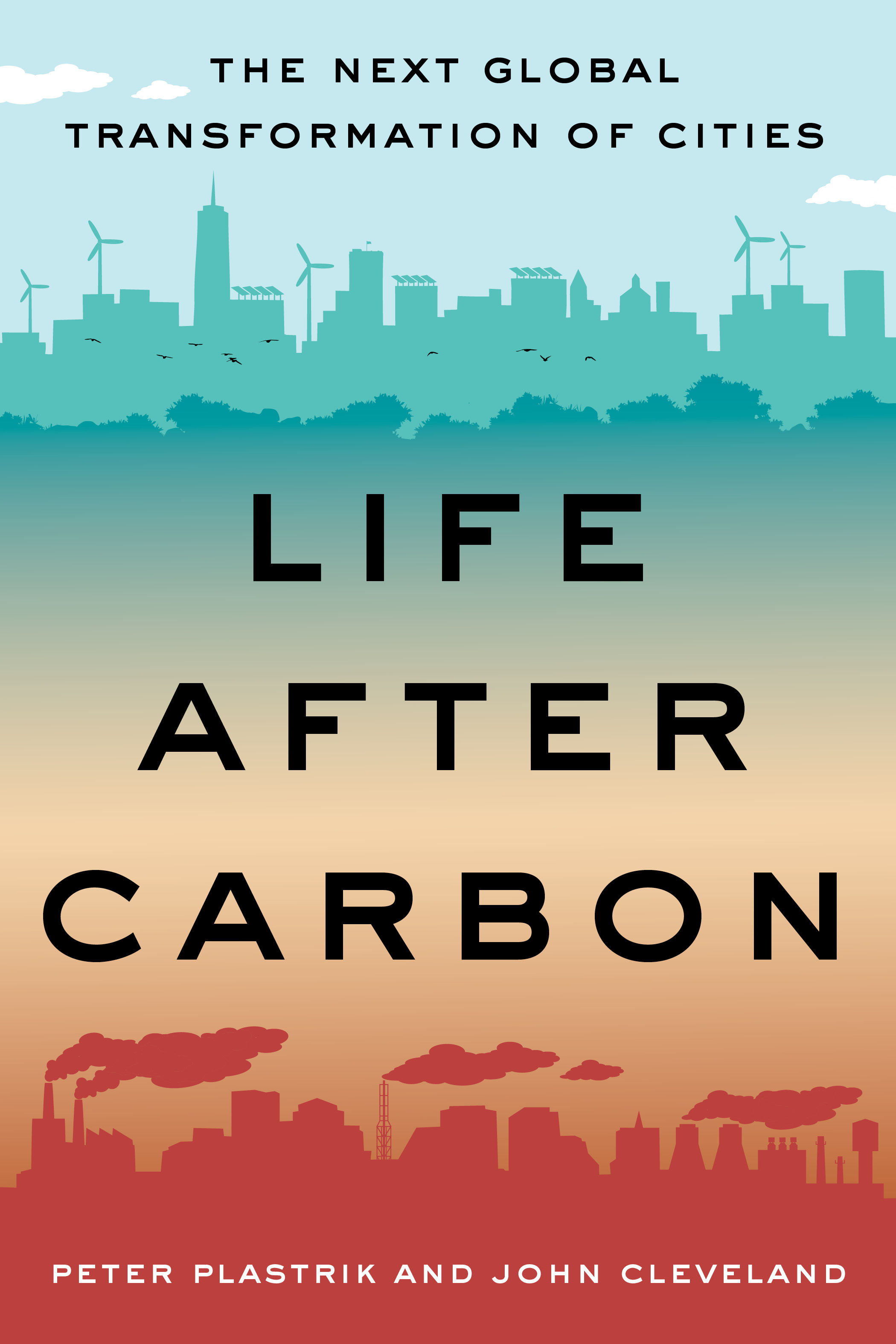Urban Climate Innovation Laboratories
Featured Urban Climate Innovation Laboratories
Austin, US
Berlin, Germany
Boston, US
Boulder, US
Cape Town, South Africa
Copenhagen, Denmark
London, United Kingdom
Melbourne, Australia
Mexico City, Mexico
Minneapolis, US
New York City, US
Oslo, Norway
Paris, France
Portland, US
Rio de Janeiro, Brazil
Rotterdam, Netherlands
San Francisco, US
Seattle, US
Shanghai, China
Singapore, Republic of Singapore
Stockholm, Sweden
Sydney, Australia
Toronto, Canada
Vancouver, Canada
Washington, D.C., US
Urban Climate Innovation Laboratories
(From Chapter 1)
Cities are standing up, taking action and using one single,
unified voice to combat the effects of climate change.
Paris Mayor Anne Hidalgo
When you spend time in some of the world’s most prominent urban climate innovation laboratories, as we have, you can see the future of cities in the making. A whirlwind world tour of the labs would provide a set of unique urban experiences.
In San Francisco, we would visit a huge facility on a pier on the city’s famous bay. We’d put on white plastic hardhats and roam through the noisy, solar-powered Recology building, around machines that sort 1.5 million pounds of urban waste every day. Garbage, paper, food scraps, bottles and cans, computers, batteries, furniture, and much more—all destined for recycling, composting, and reuse. “A world without waste” is the plant’s mantra.
In Copenhagen, we would take a bicycle ride during the evening rush hour that sends tens of thousands of bicyclists streaming home from work and school along a specially designed 242-mile street-and-road network that is a route of choice for commuters. It’s a constant flow of people, young and old, managers in suits, women in high heels, parents hauling children—in a city that has more bikes than cars.
Alongside Boston’s sparkling harbor on a clear morning, we would visit an eight-story, 132-bed hospital built on a waterfront site raised more than three feet above ground level, with critical electrical equipment located on the roof instead of in the basement to avoid flooding from rising seas and storm surges. We’d walk around the building’s exterior to see landscape walls that will serve as artificial “reefs” to buffer rising waters.
In Mexico City, we would ride one of the hundreds of red, articulated Metrobúses that move along bus-only corridors in the city’s extensive Bus Rapid Transit (BRT) system. Every day nearly 1 million passengers, including many car owners, take the fast, reliable service, which didn’t exist just 10 years ago.
In Shanghai, inside a building on North Zhongshan Road, we would eyeball a huge, wall-mounted computerized board that displays trading prices for the city’s “cap-and-trade” market for CO2emissions of more than 300 companies. You can monitor market activity on a smart phone, if you read Chinese.
One afternoon in Vancouver’s Southeast False Creek neighborhood, under the Cambie Street Bridge, we would tour the first pump station in Canada that mines sewage for heat to warm water that circulates into nearby buildings and heats thousands of residences.
In New York City, we would head offshore to see where the $60-million Living Breakwaters project is installing a half-mile-long underwater “necklace” of stone and bio-enhancing concrete moundsand restoring oyster beds to protect a community and beaches destroyed by Hurricane Sandy. “Rather than cutting communities off from the water with a levee or wall,” proclaim project designers, “our approach embraces the water.”
In Rotterdam, we’d walk through the Zoho “climate proof” district and into Benthemplein Water Square while it is dry, a large public space for mingling, events, and recreation that also serves as a giant rainwater collector—with a water wall and a rain well designed to visibly gush rainwater onto the square, and three basins that collect water and slowly release it into the ground.
We could show you much more of the climate-driven urban future.
In Oslo we could visit the city hall where the Nobel Peace Prize is awarded, then have a beer in a café on nearby, tree-lined Karl Johans Gate, the city’s main street—in an historic business and office downtown area from which cars will be banned starting in 2019.
In Seattle, we could climb the wood-and-steel steps of the six-story Bullitt Center described by owners as the “greenest commercial building in the world.” The center is designed to function “like a forest of Douglas fir trees,” explains Bullitt Foundation president Denis Hayes, a cofounder of Earth Day, “getting its energy from the sun, soaking up the rainwater, and serving as an incredible public amenity.”
In Sydney, we could enjoy views of the iconic Opera House and busy harbor from one of the downtown office buildings that have reduced GHG emissions by more than 45 percent, saving $21.6 million a year on electricity costs, and have cut annual water consumption by 36 percent, the equivalent of nearly 2,000 Olympic-sized swimming pools.
In Minneapolis, we could ride on the 11-mile, electric light-rail Green Line, opened in 2014 with 18 stations, operating 24 hours a day through bustling neighborhoods and corridors and carrying an average of nearly 40,000 riders each weekday. Initial plans for the $1 billion line changed after community groups protested that low-income neighborhoods with majority African-American and immigrant populations would be bypassed.
In Portland, Oregon, 60 miles from the Pacific Ocean, we could jog over the Willamette River on Tilikum Crossing, the first major bridge in America for pedestrians, bicyclists, and public transit only—no cars or trucks. The $135-million span’s design was raised three feet to accommodate future tidal surges on the river.
In Stockholm we could peddle an electric bicycle through the Royal Seaport, a completely new low-carbon-emissions district that is just minutes from the city center and will have nearly 50,000 housing and office units powered by renewable energy. Developers have had no problem selling apartments and there was a waiting list for rentals.
The urban future lives online, too, in case you want to trek there without leaving home.
You can send e-mails to any of Melbourne’s 77,000 publicly owned trees. Since 2013, many of them have received love letters from around the world.One tree got an e-mail asking it how to solve Greece’s financial crisis. The golden elm at Punt Road and Alexandra Avenuewas saved from being removed to widen a road because it had received so many adoring e-mails from locals.
At the website for Cape Town, the first African city to adopt a climate change strategy, you can listen to a catchy tune, “Get Your Piece of the Sun,” a mix of traditional South African and other music genres commissioned by city government to promote the use of solar water heaters—a campaign that contributed to installation of 46,000 of the devices.
Each of these examples is a city innovation in response to climate change. Promoting bicycling and walking, speeding up bus movement through a city, and banning cars from central districts are ways to reduce the urban flow of gas-powered cars and their GHG emissions. Cutting energy consumption in buildings and by industries, recycling waste, mining wastewater for heat instead of burning fossil fuels, and promoting solar water heaters also lessen damaging emissions. Redesigning buildings, public squares, and coastlines, and raising bridge heights reduce a city’s vulnerability to flooding and sea level rise due to climate change. As does caring for a city’s trees, which soak up excess stormwater and help to cool streets subject to increasingly hot weather.
Many of these city innovations have received recognition and awards from organizations pushing for climate action. Many are being adopted by other cities. Taken together they amount to just a small fraction of the vast portfolio of innovations underway in these climate-lab and other cities worldwide. They are the leading edge of a rising wave of urban change.
About Urban Climate Innovation Laboratories
A city innovation lab isn’t a facility with highly controlled conditions, high-tech equipment, and scientists in white coats. It’s not a loft full of computer-savvy urban pioneers holding all-night hack-a-thons. The laboratory is the entire city, the complex, real urban world with its messy swarms of businesses, governments, and organizations; urban systems; ideas, interests, and politics; built infrastructure, natural ecosystems, economic sectors; and, of course, all manner of people and groupings. These city labs exist on every populated continent, but have concentrated mostly in the U.S., Canada, China, western and northern Europe, Australia, and Japan.
The 25 innovation labs we draw inspiration from—our main database—are located in 15 different countries and six continents. They are in several different climactic zones, with about two-thirds on seacoasts. They generate varying amounts of per capita GHG emissions. They are relatively wealthy cities, either in global or national contexts.
Other cities probably deserve the title of climate innovation lab. Adelaide, Auckland, Bogota, Bristol, Buenos Aires, Curitiba, Hamburg, Helsinki, Milan, Oakland, Shenzhen, Tokyo, and Yokohama come to mind.


